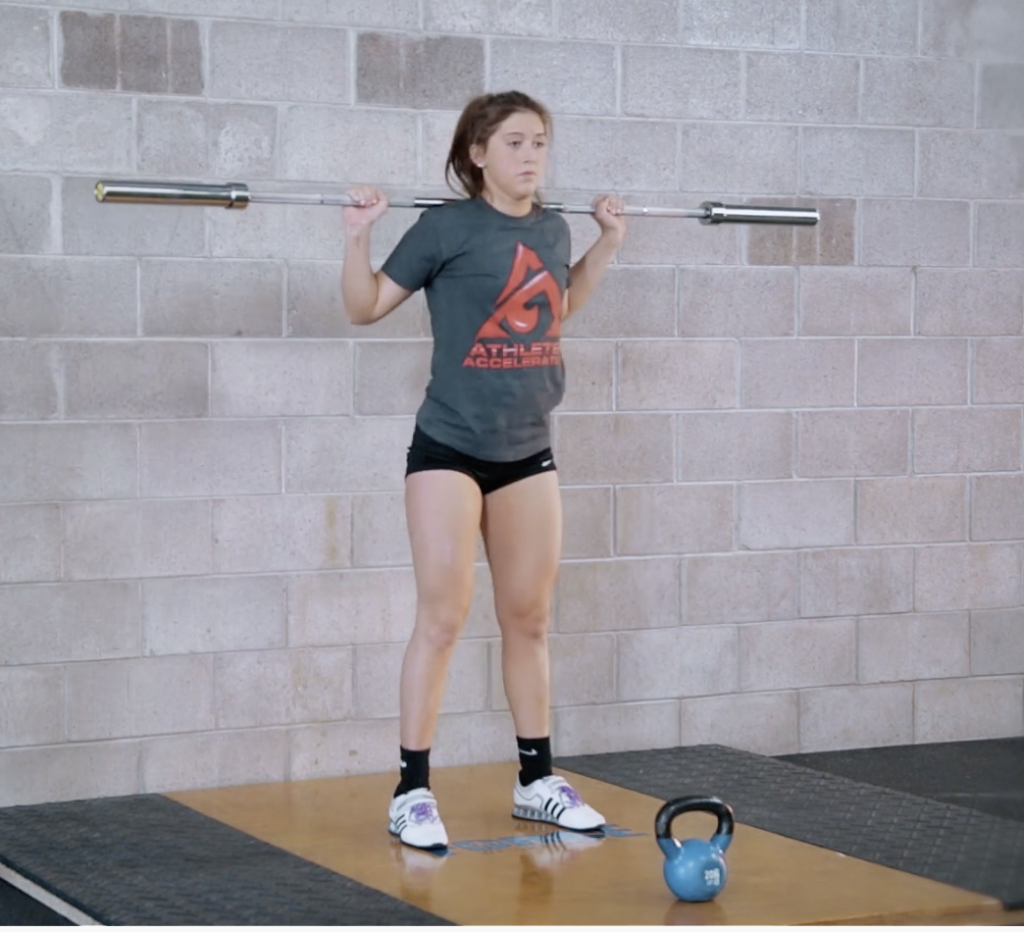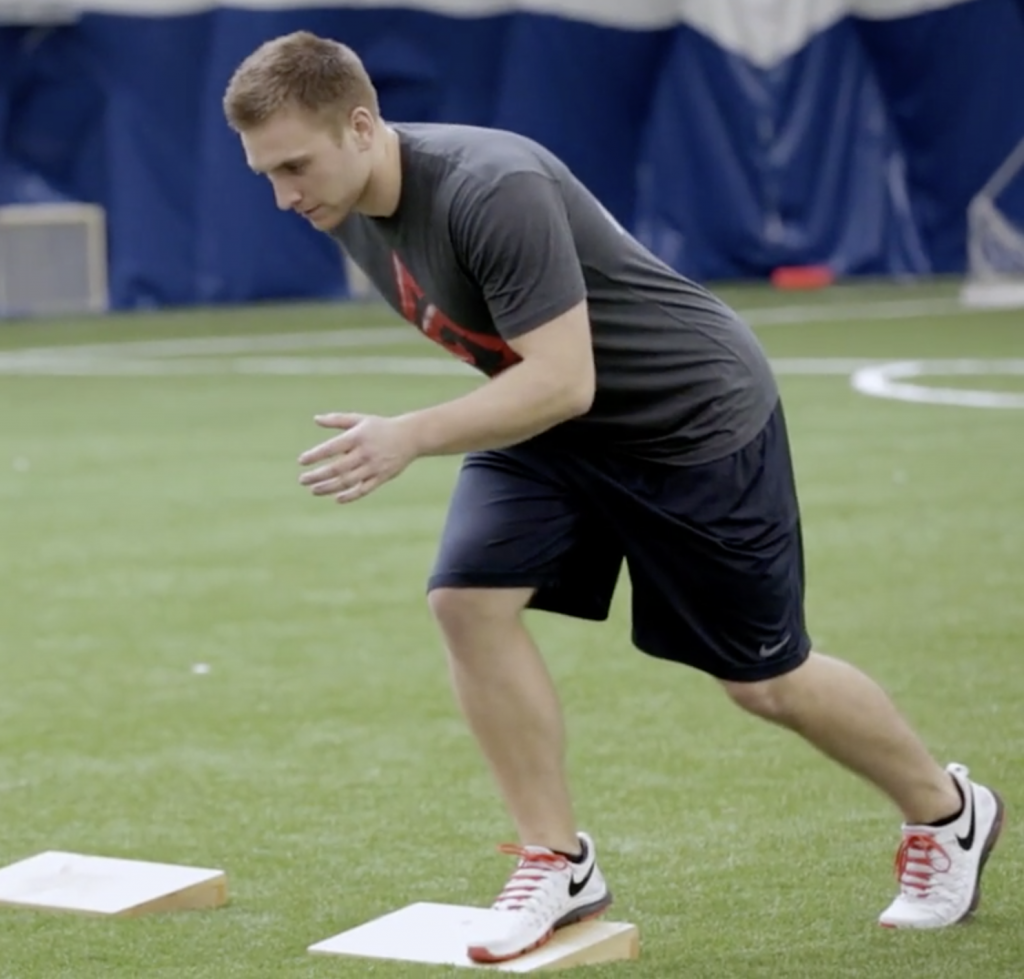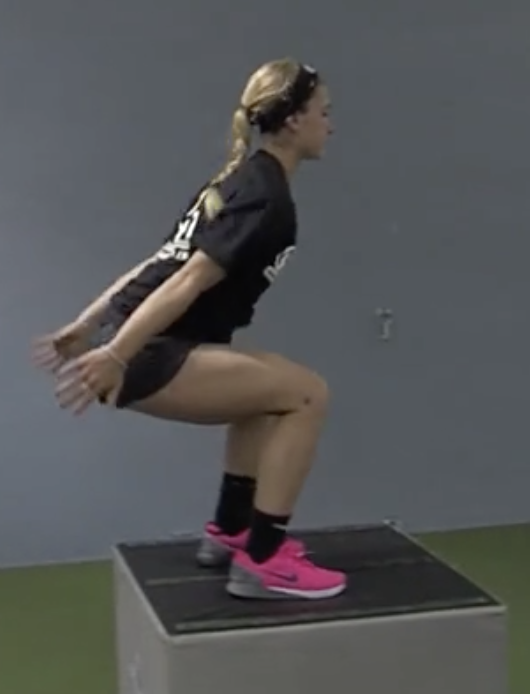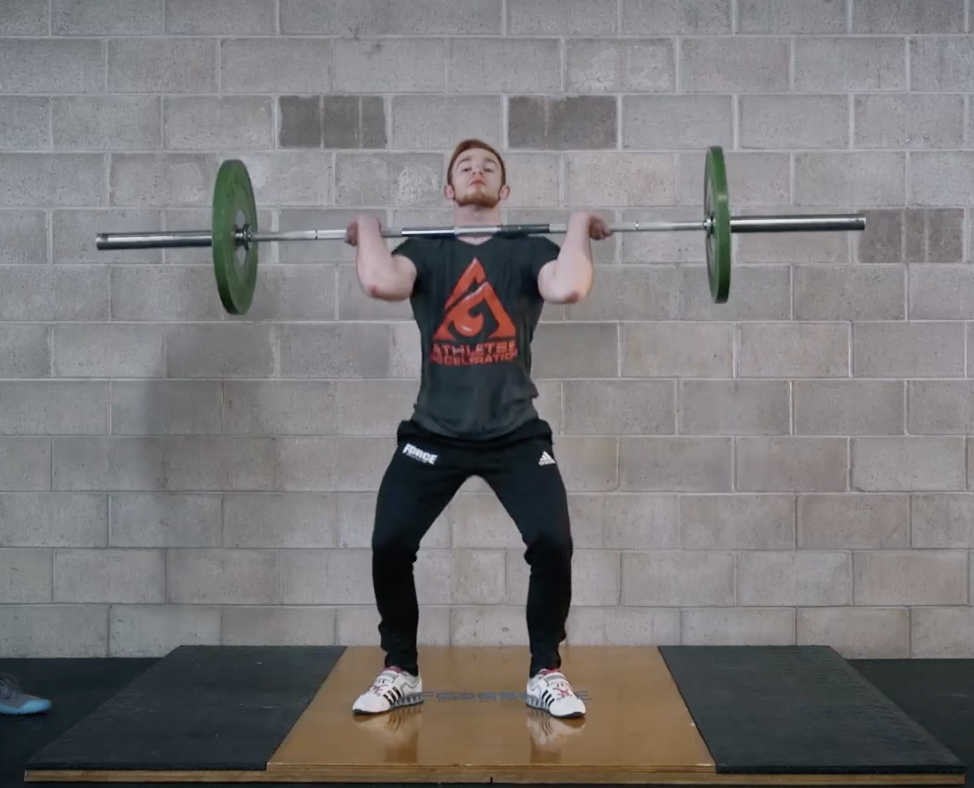
Image Courtesy: Athletes Acceleration
As long as I’ve been a coach, I’ve realized something important. It is good and important to be strong, but the manner by which you achieve your strength levels is even more important. Strength training for athletes is not simply ‘lifting heavy’.
Why do I say that? Consider this:
Let’s take two athletes who want to improve their 40 yard dash time and move better athletically overall; cut harder, jump higher, get to the ball quicker, etc.
Both athletes are age 16, 6’0, 175lb and both have only lifted weights for 1 year. Both have a 1-rep max of 225lb on their parallel back squat and have average limb lengths and normal hip structure. Not bad strength for young athletes without a lot of lifting experience, but most of us coaches would agree this athlete will benefit by improving their maximal tension capability in their legs (also known as getting stronger).
So we’d probably like these athletes to improve their 1-rep max to somewhere in the 255-285lb range in the next year, although exactly how strong they need to be does depend on their sport.
Continuing with the scenario, each athlete worked with their strength coach over the next year, and brought their maximal lift up to 275lbs.
Athlete 1 did it by cranking out heavy barbell work with rep ranges of 2-5, and average loads of 80-95% regularly.
Athlete 2 did it by a balanced attack of maximal jumps, sprints, heavy loaded carries, and an array of traditional lifting, both in the 60-80% ranges, as well as ballistic lifting.
Which athlete will likely have a better jumping and sprinting ability as a result of this? Which one will have a better athletic ceiling later in their career?
Realize that everything is a poison, and everything is a medicine. Max effort lifting is a medicine in the sense of tendon stiffness and neural drive on a global level, but it can’t offer athletes their highest performance as far as its effect on motor learning. Also, the fact that the best athletes have better sensitivity on the local muscular level, rather than simply the ability to squat 500lb, gives them better coordination and speed of fine tuned movement.
In this sense, going to max strength regularly (85-90% efforts and above) too soon, or too often can set athletes up for a sub-optimal season and even career. It’s a powerful tool but must be used in context. Also, realize that there are athletes on the dopamine sensitivity and acetylcholine level spectrum that will respond better or worse to barbell loads above 85% of 1RM in general.
This all being said, before I look to max effort lifting for an athlete, I look to get them stronger by the selective use of the five methods below. We don’t just start throwing weight on the bar when considering strength training for athletes. There is a time to test yourself and occasionally go heavy, but most of our time should be spent training (60-85% 1RM range) rather than testing (90% and above range or going to failure with submaximal loads).
The five areas I’ll always seek to improve “strength” in before looking at much work over 80% 1RM for any athlete (and this even includes the Olympians I’ve worked with) are as follows:
- Maximal Sprinting
- Maximal Jumping
- “Easy Strength”
- Skill Strength and Manual Labor Based work
- Ballistic Lifting
1. Max Sprints

Many athletes sprint. Not as many know what it is like to do true speed training. Many coaches’ ideas of speed training are something like 8x200m in 30 seconds with 3’ rest, or a bunch of suicide sprints on 1 minute rest. True speed training is something every athlete needs to experience. As Pawel would say, “It is simple, yet sinister.” It is sinister, because you can’t hide if you are slow.
True speed training prescriptions include 150-300 total meters of maximal sprinting, with running in the 10-60 meter ranges. They are done on full recovery, with 1-2 minutes rest for every 10 meters the athlete ran. Just because an athlete isn’t “tired” doesn’t mean they are ready for the next rep.
Maximal sprinting is the cornerstone of strength development due to the muscle recruitment and velocity factor.
The maximal power clean of many track athletes will go up to PR levels in season, not because of programming changes, but because the maximal sprinting was intensified due to competition. Maximal sprinting gets athletes strong in the exact muscle groups they’ll use when running in sport.
Finally, hill sprints are definitely counted in this realm, so long as they are fast. If this is accounted for, they can compound the strength effect since hill sprints require force to be applied to the ground for a slightly longer time period.
2. Maximal Jumps
Jumping is a close cousin to maximal sprinting in terms of strength development. When strength training for athletes, jumping should not be overlooked. It is actually the movement on the training spectrum with the greatest total recruitment of utilized muscles. A depth jump will recruit more muscle in a common muscle such as the quads, and do so more quickly than a maximal squat. Depth jumps, hurdle hops, standing triple jumps and triple broad jumps, and any other maximally performed jump with an outcome goal is going to be a vital ingredient in bringing along any athletes total strength and athletic development.
Soviet research with javelin throwers has shown that the cessation of barbell squatting, with depth jumps being the primary training stimulus, caused the one’s barbell squat max to increase even further! Jumping carries a great power to improve one’s strength levels, and combined with the method below, may be all an athlete needs to reach their highest strength capacity.
3. Easy Strength; Lift Moderate Weights More Easily


When it does come to the weightroom, “Easy Strength” is a method I’ll swear by as long as I am in the coaching and iron game. Dan John, and Pavel Tsastouline are absolute legends in the strength game. They put their heads together for over a year to produce one of the best books ever outputted on weightlifting (and training in general). They gave us, as coaches, a gift we can use to make our athletes stronger with less wear and tear, while continuing to have them push through ceilings year after year in an appropriate manner.
When strength training for athletes, what is the Easy Strength principles I keep with me? Simple:
- Always leave reps “in the bank” and don’t take lifts to failure. The smartest powerlifters will triple a lift when they knew they were good for a five. A similar approach works when strength training for athletes.
- Get stronger by making your 80% easier, not chasing 95% repeatedly
- Work in 10’s, a magic number. Go 2×5, 3×3 or 5×2, or even 1×10, but make sure the sets aren’t overly taxing.
- Utilize clusters, such as 1 rep, wait 10 seconds, do 2 reps, wait 10 seconds, do 3 reps for 6 total reps, and then add weight to the bar for 2-3 rounds.
- Train higher frequency to grease the groove of the lift. When you aren’t taking lifts to failure and keeping volume down, you can lift often, even every day.
4. Skill-Strength and Manual Labor Based Workouts
I was reading a Christian Thibaudeau article recently that confirmed how much I enjoy using “manual labor” type methods to improve athlete’s strength, toughness, function, and even the weight that manifests itself in a 1 rep max. Zach Evan Esh is also a huge proponent of this type of strength training for athletes, which would include loaded carries of all types, log work, sandbag work, hammer and mace work, and anything else that represents an ancient human being who got really strong without needing a barbell to do it. In a recent article, Christian Thibaudeau told a story of his uncle who worked at a steel mill, deadlifted 500lb in front of him, without even lifting weights for training!
My friend Paul Cater, one of the most creative guys I know, took me through a workout where we supersetted heavy farmers carries up a hill, with sprints up a hill. This was one of the most enjoyable experiences I’ve had in getting strong and explosive at the same time. Carry and lift heavy and awkward things and watch your abilities as a human, your grit, and strength improve.
One last thing I like about this work is that the variability is inherently high. In other words, there are more ways the body can often “solve the problem” of lifting something that might be a little awkward, compared to lifting a very heavy barbell weight. More variability (within reason) allows for better motor learning, and even recovery from a CNS perspective.
5. Ballistic Lifting (Speed Half Squat/Full Catch Clean)
The last training means I’ll get into here is ballistic lifting, or light to moderate weights (30-60%1RM), moved as quickly as possible. In the training of track and field athletes, Tadeusz Starzynski was one of the first coaches to show that putting a timer on squats was more important for jumping success than athletes just trying to lift as much as they could. For example, an athlete may be given 200lb on the bar, and need to half squat it as many times as they can in 6 seconds. They can then keep adding weight so long as the reps don’t drop below a threshold number, say 5 repetitions.
Cal Dietz in the book Triphasic Training offers a similar story regarding his AFSM method, where he had well trained athletes boost their bench 1RM beyond original levels by invoking a period where only fast and ballistic barbell training was utilized.
When “Easy Strength” is waved throughout the year with this type of work, say 3 months of easy strength to 1 month of ballistic lifting, magic things can happen.
Some movements I really like in this camp are things like
- speed half squats
- full catch hang cleans with an emphasis on speed under the bar
- oscillating partial range lifts, such as fast bench pressing with the bar a few inches off the chest
- Jay Schroeder’s EDI method
- and even bodyweight movements where athletes will simply move a limb as fast as possible from endpoint to endpoint.
This isn’t a method that I’ll use as the sole method of strength building year round, but in contrasting months and cycles, it can have a huge impact.
Conclusion
For many sports performance coaches, we got into this profession because we loved weights. Perhaps you loved weights more than sport itself, or perhaps more than sprinting or jumping, or explosive expressions of movement that is the cornerstone of sport. Regardless of your background, I’d challenge you to look at the manner by which you are getting athletes strong to give them their best yearly, and career performances. At the end of the day, power is king, and the weight room is the weight room, so let’s be sure to plan accordingly.
Authored By:
Joel Smith is an assistant strength and conditioning coach at UC Berkeley and the owner of Just Fly Sports Performance. Joel is also a track and field coach of over a decade and works with Diablo Valley Track and Field Club. He is the author of two books on jump training, as well as the upcoming work on speed training “Speed Strength”. His experience ranges from 8 year old track and field sprinters to swimming Olympians and Gold Medalists.